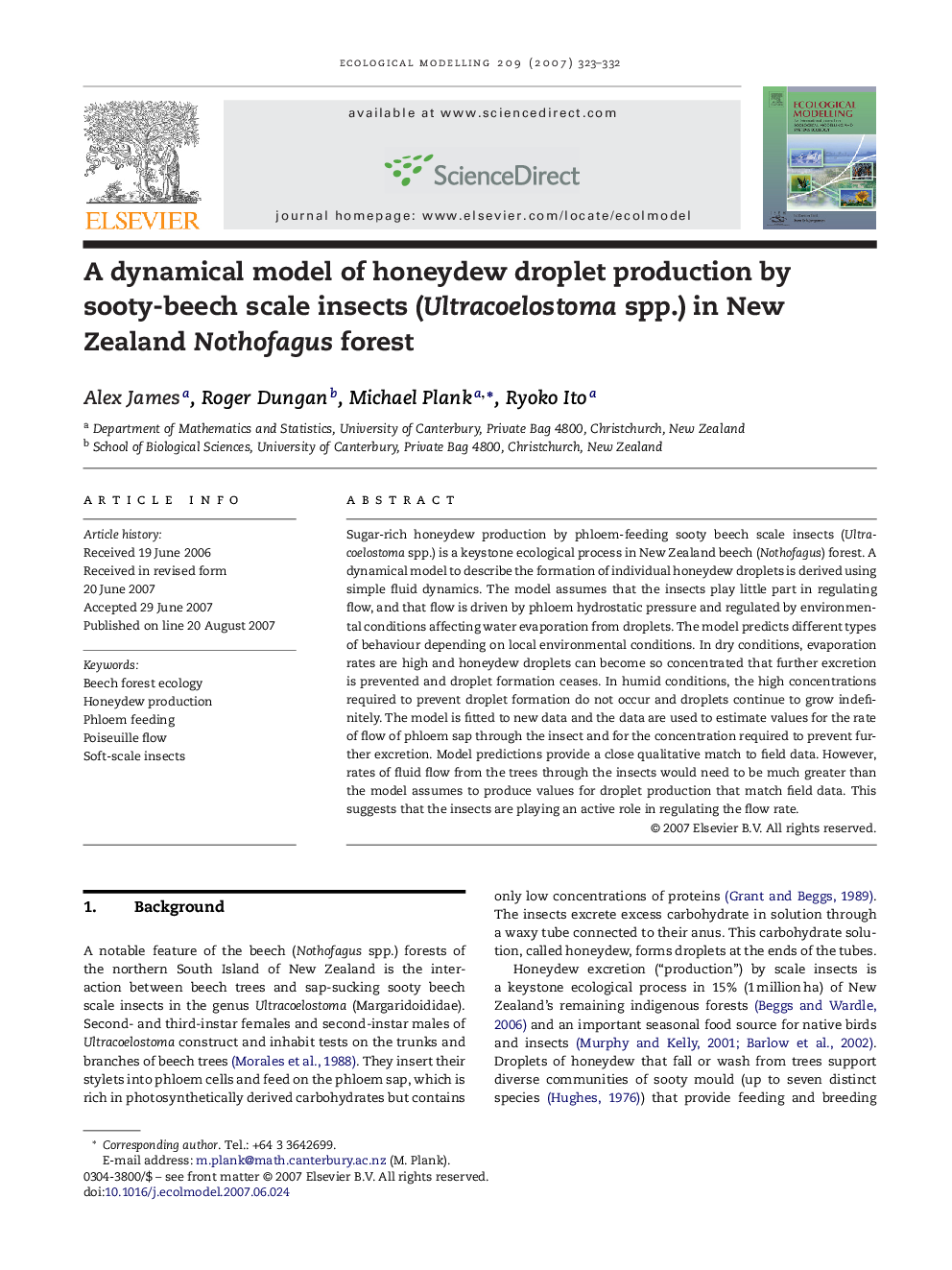| Article ID | Journal | Published Year | Pages | File Type |
|---|---|---|---|---|
| 4378531 | Ecological Modelling | 2007 | 10 Pages |
Abstract
Sugar-rich honeydew production by phloem-feeding sooty beech scale insects (Ultracoelostoma spp.) is a keystone ecological process in New Zealand beech (Nothofagus) forest. A dynamical model to describe the formation of individual honeydew droplets is derived using simple fluid dynamics. The model assumes that the insects play little part in regulating flow, and that flow is driven by phloem hydrostatic pressure and regulated by environmental conditions affecting water evaporation from droplets. The model predicts different types of behaviour depending on local environmental conditions. In dry conditions, evaporation rates are high and honeydew droplets can become so concentrated that further excretion is prevented and droplet formation ceases. In humid conditions, the high concentrations required to prevent droplet formation do not occur and droplets continue to grow indefinitely. The model is fitted to new data and the data are used to estimate values for the rate of flow of phloem sap through the insect and for the concentration required to prevent further excretion. Model predictions provide a close qualitative match to field data. However, rates of fluid flow from the trees through the insects would need to be much greater than the model assumes to produce values for droplet production that match field data. This suggests that the insects are playing an active role in regulating the flow rate.
Keywords
Related Topics
Life Sciences
Agricultural and Biological Sciences
Ecology, Evolution, Behavior and Systematics
Authors
Alex James, Roger Dungan, Michael Plank, Ryoko Ito,
